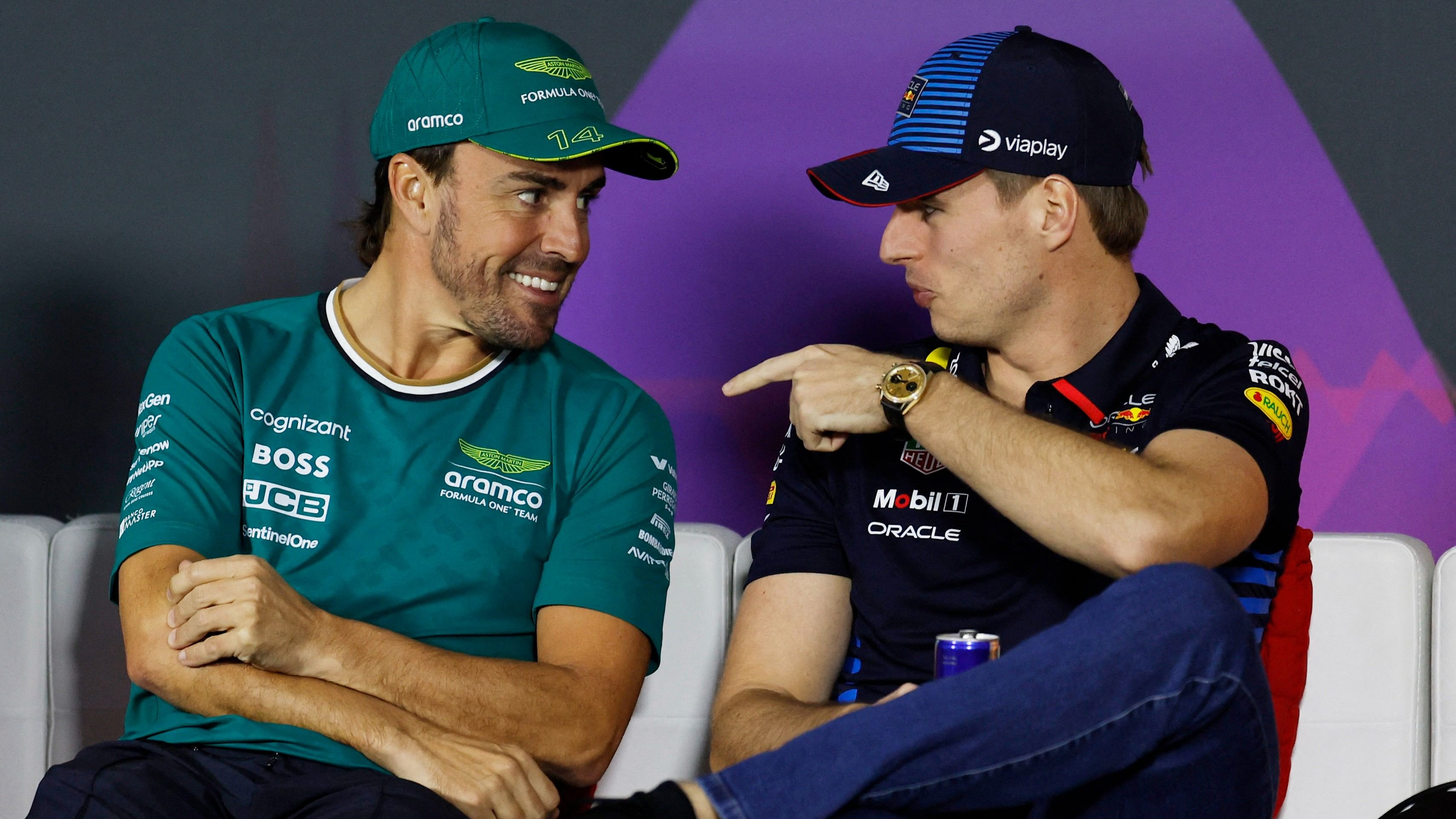
Aston Martin's Fernando Alonso and Red Bull's Max Verstappen during a press conference ahead of the Bahrain Grand Prix.
Credit: Reuters Photo
The longest-ever season of the Formula 1 World Championship begins Friday in Bahrain, marking the first of 24 Grand Prix-race weekends across Asia, Europe, Australia and the Americas. Uniquely, all 20 drivers from the previous season retained their seats, a first since F1’s inception in 1950.
This year’s grid showcases three former world champions: Lewis Hamilton, Fernando Alonso, and the favourite for his fourth consecutive title, Max Verstappen.
However, with Mercedes veteran and 7-time world champion Hamilton announcing his move to Ferrari next year, a domino effect has begun in the driver market. This year will see intense competition among drivers to secure their futures.
Red Bull lead the pack with significant developments that build on their previous unbeatable form. The battle for the best of the rest, however, looks fierce. Ferrari are emerging as the leading challengers, potentially the second-fastest team, while Mercedes and McLaren vie closely behind, leveraging their star drivers and strategic acumen. Aston Martin, often on the podium last year, cannot be overlooked in this battle. The battle between these four teams for the second place in the constructors’ title seems to be the most exciting contest to watch out for this year.
Widely accepted as the pinnacle of motorsport, Formula 1 and its fan base had historically been rooted in Europe until the US-based Liberty Media acquired it in 2017. Since the takeover, F1 has made strides towards making the sport fan-friendly, entertaining, and commercially lucrative while increasing competitiveness through a cost cap that has narrowed the performance gap between teams.
Heralding a new era
Who would have thought that Netflix would be credited for heralding a new era of an entire sport? Yet, it is undeniably true. Soon after Liberty Media acquired F1 from UK-based business magnate Bernie Ecclestone, they launched ‘Drive to Survive,’ a docu-series offering a behind-the-scenes look at teams and drivers as the season progresses. It aimed to revive F1’s declining television viewership and attract younger audiences.
F1 drivers were humanised, their voices heard, and their stories brought to light – all of which are impossible when they are racing at 300 kmph with a visor shielding their emotions. The show succeeded, and the numbers speak for themselves.
Last year, F1 races attracted over six million in-person attendees, setting a record for the sport. The Australian Grand Prix in Melbourne alone drew 444,631 spectators, ranking it among the most attended sports event ever. ESPN reports that the average viewership per race in 2023 was 1.11 million, doubling from 2018 and growing 15% annually. Furthermore, the fifth season of ‘Drive to Survive’ amassed 224 million viewing minutes in its first week in 2023, a significant increase from 109 million at its 2019 debut.
India’s tryst with F1
India’s relationship with F1 has seen several ups and downs, peaking in the 2000s when Indian drivers Narain Karthikeyan and Karun Chandhok got opportunities to drive in F1, despite not enjoying significant success. In addition, the Buddh International Circuit hosted three Grand Prix events between 2011 and 2013, all won by Sebastian Vettel, until a 2014 tax dispute with the government halted the races. There was also a team called Force India, a team jointly owned by Sahara India and Vijay Mallya from 2008-2018, until bankruptcy and subsequent sale.
Today, F1’s popularity in India is rebounding. A 2020 survey from the ‘Drive to Survive’ era pronounced India as F1’s fifth-largest market globally, with an estimated 31 million fans.